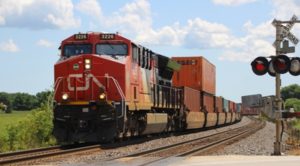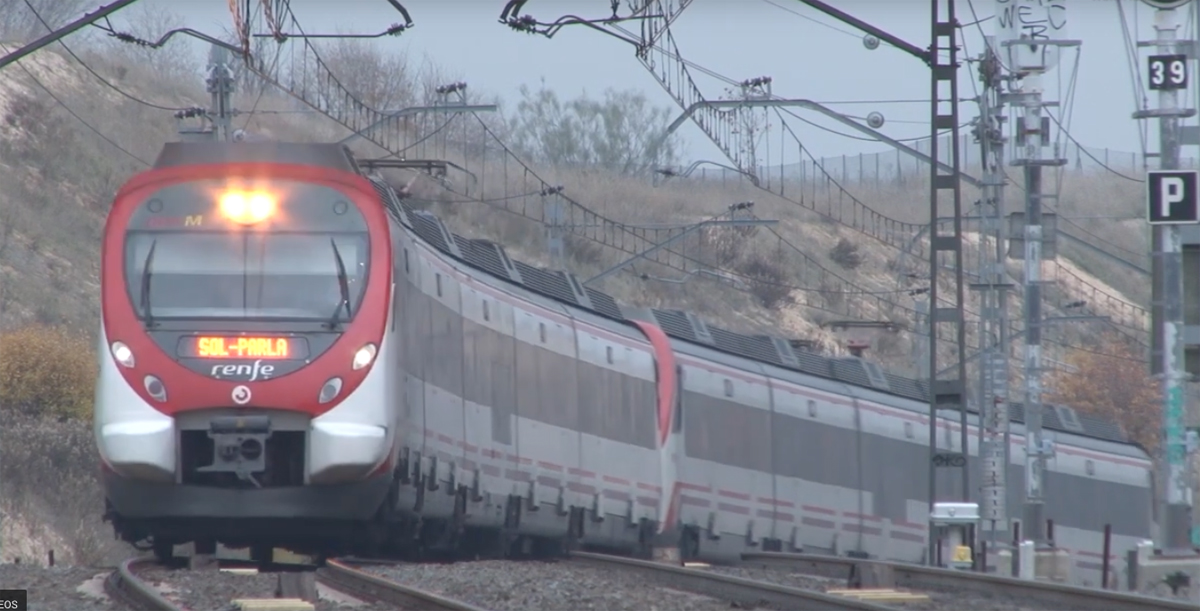
“We know that in order to compete down the road with the truck, that we have to not only be safer, more efficient but we also have to be more customer-centric,” Keith Reardon, CN’s senior vice president of consumer product supply chain, told an investor conference on Wednesday. “And that’s our thinking as we develop our terminals of the future. We’re using our Brampton Intermodal Terminal as our mini sandbox to play in to find out how do we evolve our terminal structures, how to evolve our processes to be safer, more efficient, and more customer focused.”
The Brampton terminal, outside Toronto, is the busiest on CN. The facility has been redesigned so it can more efficiently handle higher volumes. “If we redesign our yards to be more productive, have more capacity, and be able to provide higher service levels then we’re going to be much more successful,” Reardon says.
CN has installed telematics on the terminal’s cranes and shunt trucks so their movements are tracked and then reviewed with an eye toward making operations safer and more productive.
“We view our terminals as an outdoor distribution center,” Reardon says.
CN also has put more technology in the hands of terminal supervisors, including smart screens and smart maps that visualize terminal inventory and help reduce the number of times each container is handled.
Ultimately, the railway is looking to make some terminal operations autonomous, like the dockside container terminals that are relatively common at modern ports outside of North America.
BNSF this year became the first railroad to deploy an autonomous autostrad crane at a domestic intermodal terminal. BNSF also is exploring the use of autonomous trucks within its terminals, as well as streamlining its gates to permit automatic entry and exchange of data with trucking partners.
CN has begun to integrate the trucking fleets of the railway, H&R, and TransX while getting deeper into the supply chains of some “blue chip” domestic customers with higher service requirements than the railway currently provides, Reardon says.
“We are giving the TransX and the H&R folks a lot of leeway to come in and provide … more white-glove type service with those customers, so we can get into the additional revenue streams that maybe we have not been able to,” Reardon says.
CEO JJ Ruest pointed to the railway’s purchase of 50 additional battery-powered trucks from The Lion Electric Co. that will be used in drayage, container shuttle service, and port operations across the CN system. The deal was announced this week and builds on a pilot program CN began in April 2019.
Electric trucks are a way to shave costs, reduce the railway’s carbon footprint, and put pressure on the rest of the industry to step up, Ruest says. “In some cases from time to time, we want to be a disruptor,” Ruest says.
CN expects a good fall intermodal peak this year and will have enough resources on hand to handle the additional volume as crews are recalled from furlough.
The snap back in volume last month caught CN off guard. Because the railway did not have enough crews back in service, it probably missed out on $15 million to $20 million in revenue from freight it could not move, Ruest says.
Congestion is easing at the ports of Vancouver and Prince Rupert, British Columbia, as CN works to send well cars to handle increased international intermodal business through the ports.
The first of three additional sidings being built on CN’s BC North Line to Prince Rupert will enter service this month, with the other two scheduled to be complete before winter. CN is likely to add more siding capacity on the line next year to keep up with growth in container, carload, and bulk traffic bound to and from the port. Trackage within the port terminal is also being expanded through a combination of funding from the federal government, port authority, and CN.
Ruest and Reardon spoke on a webcast with Scotiabank transportation analyst Konark Gupta.













